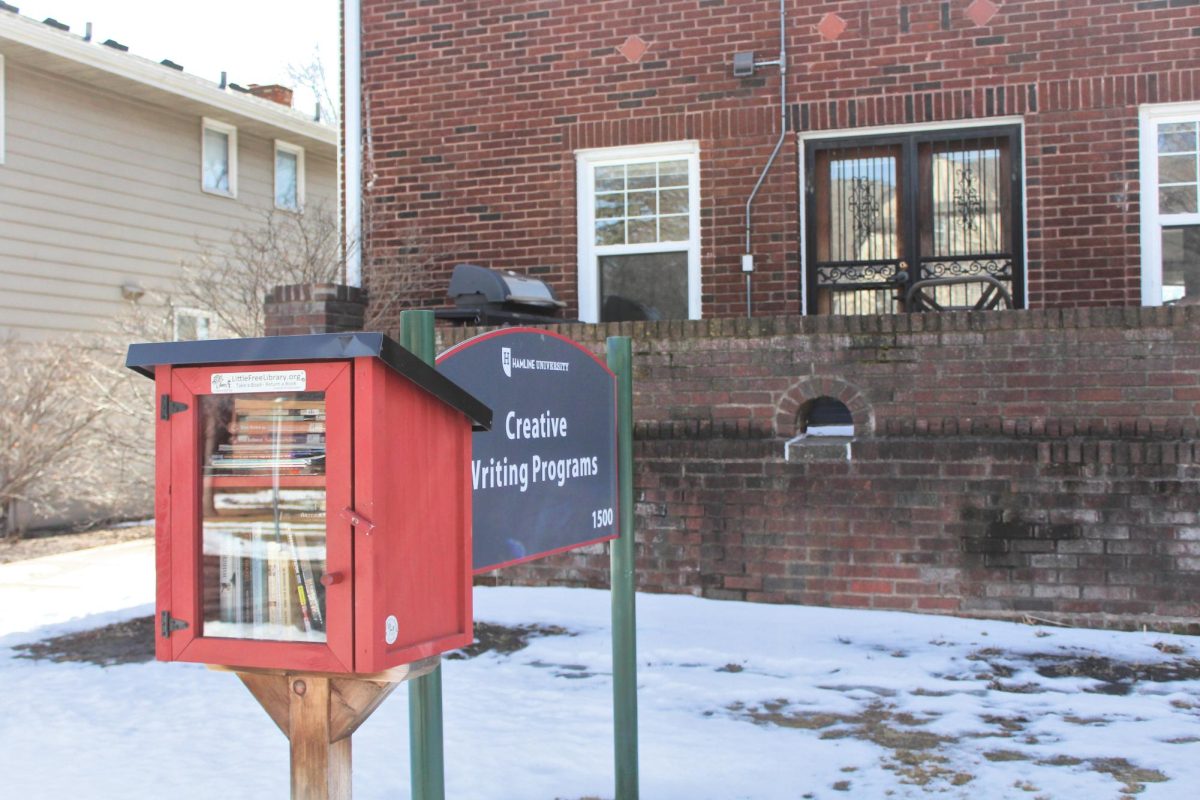This article was previously published in print on Dec. 05, 2023.
Despite the remarkable progress made in technological advancements and scientific breakthroughs in the 21st century, a noticeable gender gap still persists in Science, Technology, Engineering and Math (STEM) fields. Despite the efforts to promote diversity and inclusion, there is a significant underrepresentation of women in science, technology, engineering and mathematics.
This gender disparity not only deprives society of diverse perspectives but also limits our collective potential for innovation and progress. One of the reasons behind this imbalance is the historical gender bias that has existed for centuries, leading to a lack of female role models in STEM fields. Additionally, there is a lack of support and encouragement for girls and women to pursue STEM careers, starting from an early age.
This results in a gender disparity in the number of women who take up STEM courses and careers. Another factor contributing to the gender gap in STEM is the gender stereotypes that still exist in our society. These stereotypes suggest that men are naturally better at science and math, while women are better suited for nurturing roles. Such stereotypes discourage women from pursuing STEM careers, leading to a lack of representation of women in these fields. It is important to increase female participation in STEM, not only for the benefits of diversity and inclusion but also for the progress and innovation that can be achieved by having a wider range of perspectives. Efforts need to be made to create a more inclusive environment for women in STEM, including mentoring programs, supportive policies, and initiatives to encourage girls and women to pursue STEM education and careers.

Despite progress in the workforce, women are still underrepresented in the STEM fields. This issue is multifaceted, with factors such as gender bias, lack of role models and societal stereotypes playing a role. The lack of representation of women in STEM not only limits the career opportunities available to them but also hinders the full potential of innovation and scientific progress in our society.
Studies have shown that a diverse workforce leads to more creative and innovative solutions to problems, which is especially critical in STEM fields as we see in Margot Lee Shetterly’s book, Hidden Figures. When the perspectives and experiences of women and other underrepresented groups are not included, we miss out on their unique insights and ideas. This can lead to a lack of progress in research and development, as well as missed opportunities for breakthrough discoveries.
Therefore, it’s essential that we work towards promoting gender diversity in STEM fields. This can be achieved through a combination of efforts, such as increasing female representation in leadership positions, offering mentorship and networking opportunities, and addressing unconscious bias in hiring and promotion. By doing so, we can help to create a more equitable and innovative society for all.
Societal expectations, unconscious bias and limited flexibility in STEM fields contribute to the gender gap. Children are exposed to stereotypes that suggest STEM subjects are more suited for boys, discouraging girls from pursuing these fields. The scarcity of visible female role models further exacerbates the issue. Unconscious bias persists in academic and professional settings, affecting hiring decisions and overall treatment, making it harder for women to succeed.
The perception of long working hours and limited flexibility can deter women, who are often expected to shoulder more domestic responsibilities. Reports of harassment and discrimination continue to be a problem, making the workplace unwelcoming for women. Policies and guidelines need to be put in place to prevent such behavior from happening and companies should create a safe and inclusive work environment for all employees.
The importance of diversity in STEM fields cannot be overstated. The inclusion of individuals from different backgrounds, cultures and experiences brings a wider range of perspectives and approaches to problem-solving and innovation. Studies have shown that diverse teams produce better results, as they are able to consider more ideas and perspectives than homogeneous teams. It is a matter of basic human rights to provide equal opportunities for all individuals, regardless of their gender, race, ethnicity, or any other factors. STEM fields should not be an exception to this. By providing equal opportunities, we can tap into the full potential of the workforce and address the growing demand for professionals in STEM fields.
In particular, encouraging more women to enter STEM fields is crucial. As half of the world’s population, women bring unique perspectives and approaches to the table, which can lead to more innovative solutions. Furthermore, ensuring equal opportunities for women in STEM fields can help break the cycle of gender disparity and inspire the next generation of female scientists, engineers and innovators. In a world that is increasingly driven by technological advancement, countries with a diverse and highly skilled STEM workforce will have a competitive edge on the global stage. Therefore, it is essential that we continue to promote diversity in STEM fields and encourage individuals from all backgrounds to pursue careers in these fields.
Bridging the gender gap in STEM requires a comprehensive approach that addresses the various factors that contribute to the underrepresentation of women in these fields. One crucial step is to provide early STEM education and mentoring opportunities for girls, starting from an early age. This can help foster an interest in STEM subjects and provide girls with the necessary skills and knowledge to pursue careers in these fields. It is also essential to promote diversity in STEM by showcasing the achievements of women in these fields and providing diverse role models. This can help to challenge stereotypes and inspire more girls to pursue careers in STEM.
Additionally, implementing and enforcing policies against discrimination and harassment in the workplace is crucial to creating a safe and inclusive environment for women in STEM. To further support women in STEM, it is important to offer flexible work arrangements and family-friendly policies that can help to accommodate the unique challenges that women may face in balancing their careers and family responsibilities. Finally, advocating for increased representation of women in leadership positions is crucial to ensuring that women’s perspectives and experiences are represented at all levels of STEM organizations. By taking a comprehensive approach that addresses these various factors, we can create a more inclusive and equitable STEM field that benefits everyone.
Women’s underrepresentation in STEM fields is a pressing issue that impacts not only women but also society as a whole. It is a multi-faceted problem that requires a comprehensive approach to solve. To address this issue, we need to start by raising awareness and challenging the stereotypes that prevent women from pursuing STEM careers. Stereotypes such as “women are not good at math or science” have long been perpetuated, leading to a lack of female representation in these fields. We need to actively work to change these attitudes and encourage girls and women to pursue their interests in STEM.
Additionally, we need to address the unconscious bias that exists in STEM fields, which often leads to women being overlooked for job opportunities and promotions. Creating more inclusive environments that foster equal participation and opportunities is crucial to this effort. This can be achieved by providing mentorship and support programs for women in STEM, as well as implementing policies that promote diversity and inclusion. A diverse STEM workforce is not only a matter of social justice but also essential for advancing knowledge, technology and the betterment of society as a whole. Women bring unique perspectives, skills and experiences to STEM fields, which can lead to innovation and progress.
It is imperative that we break down the barriers that prevent women from pursuing STEM careers and encourage their full participation in these fields. Only then can we unlock their full potential and benefit from their contributions to society.













